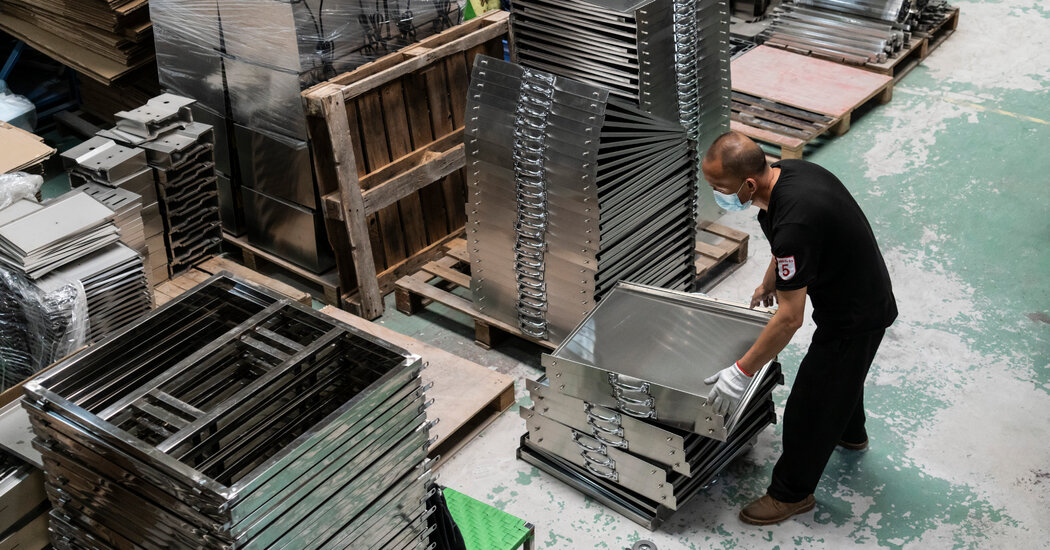Even as President Trump heaped additional tariffs on China, his barrage of trade levies on countries across Asia and unpredictability about what he might do next has encouraged some companies to hunker down in China, exactly the opposite of what he had hoped. Ga6789
Mr. Trump has steadily ratcheted up the pressure on China. As of Wednesday, his new tariffs on China exceed 100 percent, including a last-minute escalation serving as punishment for Beijing’s retaliation on earlier levies.
However, unlike what happened during his first term, Mr. Trump has accompanied the tariff campaign on China with steep import duties on dozens of other countries, including a handful of Asian countries that became popular alternatives in the earlier trade war between Beijing and Washington as a way to circumvent levies and limit supply chain disruptions.
But for some companies, the so-called reciprocal tariffs have had the unexpected effect of making China an even more appealing place to produce in and buy from. It has eliminated some of the motivation to diversify production or sourcing to places like Vietnam, India or other Asian countries.
In addition, the chaos that has followed last week’s announcement has made companies wary about adding more upheaval with a dramatic change to their supply chains. Faced with constant flux and unpredictability, companies are choosing to stay with what they know: longstanding relationships with Chinese suppliers or manufacturing partners.
“Staying in China and making China work is everyone’s strategy right now,” said Travis Luther, founder of MOSO Pillow, a Denver-based maker of bedding made from bamboo fiber.
Mr. Luther, who attended a conference for American entrepreneurs this week, said he, like other business owner attendees, was not devoting time to searching for new partners or ways to move from China. Instead, he was working with his Chinese business partner to find ways to save costs or develop new products. Cost advantages are only one part of what makes China the go-to destination for making goods.
“That’s not even why most people are in China anymore. It’s because they have very sophisticated manufacturing and engineering processes,” Mr. Luther said.
Mr. Trump has said that the tariffs would help bring manufacturing back to the United States, but that remains a difficult proposition. Currently, most American factories cannot match China’s manufacturing capability, capacity and speed even if the tariffs eat into its cost advantages.
As trade tensions escalated in the first Trump presidency, many American and multinational companies opted to move some production away from China to less adversarial countries. For most, America was not a viable option.
But changing suppliers is a difficult, expensive and time-consuming process. Mr. Luther said a consultant told him that it would cost at least $6 million to build a U.S. facility to grow and process bamboo fibers. And in the several years it would take for the bamboo trees to grow, he would have to pay the tariffs to import fibers from China.
A complete supply chain overhaul to another country requires time and money — something companies are reluctant to pursue unless they know where government policy is heading.
“It’s like the fog of war, but it’s the fog of trade war,” said Kit Conklin, the global head of risk and compliance at Exiger, a supply chain mapping firm. “There’s got to be policy certainty for industry to react.”
A top executive at an international contract manufacturer said it was impossible to make any long-term decisions about shifting outside of China based on what feels like haphazard decision-making from the United States.
“The rules of the game seem to change every day. It feels we have no option but to sit tight,” said this executive, who asked not to be identified given the sensitive nature of tariff discussions in the U.S. and China.
When American and multinational companies started to move some production from China several years ago, many Chinese factory owners opened facilities in neighboring Asian countries or Mexico. It was a way to reroute some of the flow of goods through countries with significantly lower duties.
But the recent round of tariffs on about 60 countries that imposed duties of 46 percent on Vietnam, 36 percent on Thailand, and 27 percent on India “greatly diminish” the incentive to relocate factories away from China, according to a research note from Nomura Securities, a Japanese investment bank.
Nomura said that while China still faces substantial challenges from the higher tariff, “the broader tariff net cast over its competitors may inadvertently preserve its position in global supply chains.”
Sarah Massie, who runs a consulting practice advising American companies on foreign trade, said that when tariffs are harsh everywhere, people tend to stick with the status quo. In the manufacturing world, China is the status quo. https://hga6789.com/
“If everybody is getting hit, then that’s definitely stopping some of the looking,” Ms. Massie said. “Because people think at least we already know what this supplier gives us and we were happy with them before the tariffs hit, so why don’t we just stay happy. But whether they can continue at that cost is a whole different story.”
